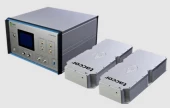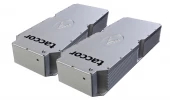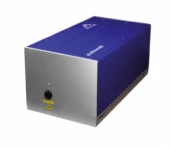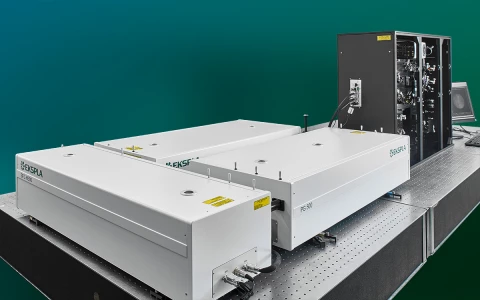Description
The Scanning SFG Spectrometer is an advanced system designed for the characterization of vibrational bonds of molecules at surfaces or interfaces. It utilizes Sum Frequency Generation (SFG) Vibrational Spectroscopy, a powerful and versatile method for in-situ investigation of surfaces and interfaces.
The SFG-VS experiment involves mixing a pulsed tunable infrared (IR) laser beam with a visible (VIS) beam, generating an output at the sum frequency (ωSFG = ωIR + ωVIS). The SFG process is allowed only in media without inversion symmetry, making it highly surface specific. The spectrometer offers high spectral resolution and access to a wide range of molecular vibrations from 625 cm⁻¹ to 4300 cm⁻¹.
SFG Spectrometer
Specifications
| Rep Rate: | Not Specified |
|---|---|
| Spectral Range: | 5882.35 to 2325.58 nm |
| Spectral Resolution: | High |
| Surface Specificity: | Intrinsically surface specific |
| Polarization Sensitivity: | Yes (Polarization-dependent SFG spectra analysis) |
Features
- Intrinsically surface specific, providing sensitive and selective orientation of molecules
- in the surface layer
- Selective to adsorbed species and sensitive to submonolayer of molecules
- Capable of high spectral and spatial resolution
- Wide range of accessible (molecular) vibrations: 625 – 4300 cm⁻¹
- Nondestructive analysis suitable for all interfaces accessible to light
- High sensitivity and selectivity for studying surfaces and interfaces of solids, liquids,
- polymers, biological membranes, and other systems
- Ideal for investigating surface structure, chemical composition, molecular orientation,
- and surface reactions
- Applicable to studies of epitaxial growth, electrochemistry, material, and
- environmental problems
- Remote sensing in hostile environments
Applications
- Investigation of surfaces and interfaces of various materials, including solids, liquids,
- polymers, and biological membranes
- Studies of surface structure, chemical composition, and molecular orientation
- Remote sensing in challenging environments
- Investigation of surface reactions under real atmosphere, catalysis, and surface
- dynamics
- Studies of epitaxial growth, electrochemistry, and material problems
- Environmental research and analysis
Frequently Asked Questions
What is the SFG Spectrometer used for?
What is the principle behind the SFG Spectrometer?
What is the spectral range of the SFG Spectrometer?
What are the optional accessories for the SFG Spectrometer?
What is the sensitivity of the SFG Spectrometer?
Similar Products



Your inquiry has been received.
Create an account by adding a password
Why create an account?
- Auto-complete inquiry forms
- View and manage all your past messages
- Save products to your favorites
- Close your account anytime — no hassle
